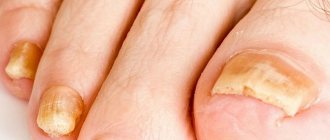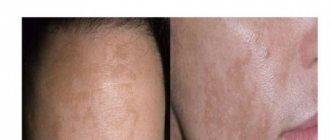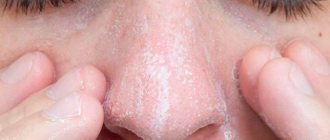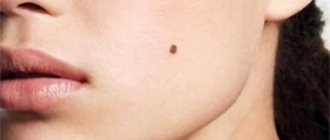Protect yourself from skin cancer.
Run to the doctor immediately and remove the damaged birthmark.
Some articles on the Internet greet readers with approximately the same advice. After them, you get the feeling that it is almost impossible to live peacefully into old age - there are too many mortal threats around.
Fortunately, the danger of damaged moles or nevi is greatly exaggerated.
Yes, they can cause unpleasant consequences. However, many people have encountered this phenomenon not for the first time and are still alive and well.
Why do moles get injured?
For different reasons. Sometimes they are accidentally cut off while shaving or damaged when dropped. Children are especially often troubled by neoplasms. They just love to scribble them. Or even tear it off.
Sometimes nevi rub against clothing or shoes - changing clothes or removing moles helps prevent this.
A myth has taken root in popular culture - scratched nevi turn into cancerous tumors. How truthful is he?
Malignant neoplasm is one of the possible consequences of an injured mole. But there is no evidence yet that these phenomena are directly related.
Sometimes a damaged nevus degenerates. However, why does this happen?
Did the injury trigger the process of an ominous transformation, or was the birthmark already potentially dangerous?
So far no one has answered these questions.
Is it necessary to remove an injured mole?
No. At least until a complete examination by a dermatologist, only a doctor can diagnose a malignant neoplasm.
Another point refutes the mythical danger of damaged nevi - doctors often take part of the tumor for examination. This test is called a biopsy. It is doubtful that doctors deliberately lead patients into a cancer trap for the sake of an accurate diagnosis.
Now let's move on to practical issues.
What to do if you have injured a mole?
So, damage could not be avoided. A bleeding wound appeared at the site of the tumor, which should not be left just like that.
What to do if a mole is cut or torn off?
Don't worry. It is easy to care for, and you will not need rare and expensive medications.
First you need to protect the wound from infection. Treat the neoplasm with an antiseptic. Chlorhexidine is best suited - it is a cheap remedy that is available in any pharmacy.
But we do not recommend smearing wounds with iodine. In this case, you will not be able to notice signs of possible inflammation.
Now about more severe cases.
What to do if you injured a mole until it bled?
Soak gauze or a piece of cotton wool in hydrogen peroxide and then apply it to the wound. This will stop the bleeding. Then you can fix the cotton wool with bandages or adhesive tape. This will prevent infection.
Other means will also help you.
How else can I treat an injured mole?
After disinfecting the wound, care must be taken to ensure that it heals properly. This will take more than one week. Usually the damage heals in about 20 days.
Which ointment is suitable for treating an injured mole?
To quickly restore the skin, use zinc ointment or calendula tincture, which disinfect, relieve inflammation and dry the wound.
Do you need a doctor's help?
You can easily heal a small wound on a nevus. First of all, it is important to prevent infection, and then the damage will heal without complications.
But then you can go to the doctor. Just in case.
It is not immediately clear in all cases why the tumor was injured - sometimes people only notice a bleeding wound. Then it’s worth taking a closer look at the damaged nevus.
Some injuries are caused only by strong friction or pressure, but others occur even with mild contact. This usually indicates the degeneration of a mole.
An examination will help to detect a cancer threat in time.
Not all your actions will be uniquely beneficial for the damaged tumors - some actions will only worsen the condition of the mole. Next we will present the Top 3 dangerous actions when nevi are injured.
What should not be done if a mole is injured, torn off or cut off?
So, the injured mole needs help. Unfortunately, she doesn't always get it - some people follow the wrong advice from the Internet, while others make their own mistakes.
Here are three common mistakes:
1. Lack of wound care
Yes, sometimes carriers of damaged nevi simply hope that the tumor will heal on its own. There are not many of them. But there is a group of people who are accustomed to turning a blind eye to “light scratches.” Neglecting injuries can lead to blood poisoning. It is a rarity. But it happens.
2. Self-medication
This mistake usually does not lead to serious consequences. In most patients, moles heal safely and do not degenerate. But it also happens differently. Injured tumors rapidly mutate into insidious cancerous tumors that attack healthy tissue.
3. Removal of nevi before examination
Some people want to quickly get rid of bleeding, damaged moles. They are not interested in what caused the injury. Are these neoplasms dangerous or not? They run to the nearest beauty salon and demand that the nevi be urgently cut off or burned. Because of this, doctors do not detect skin cancer on time.
One more thing - do not take the word for everything that is written on the Internet on the problem that interests you. Even us.
Many continue to spread mythical information about the threat of traumatized tumors. It is also important to take into account differences between patients. In one person, the doctor will identify a precancerous tumor, while in another, all moles will turn out to be harmless. So your situation may be different from other people's examples. And radically.
If you have injured a mole to the point of bleeding, then first of all rely on the opinion of your doctor, and not on the advice of strangers who have not seen your nevi.
From the description of errors we return to wounded neoplasms. What problems do they cause?
Injury factors
There are several types of nevi, each of which has an individual degree of risk of injury:
- Flat moles - externally similar pigmented structures do not rise above the surface of the epidermal cover, which significantly reduces the risk of mechanical damage to a mole of this type.
- Convex moles are formations that protrude beyond the boundaries of the surface layer of the skin. Convex nevi are often exposed to traumatic effects due to contact with tight clothing, accessories and shoes, as well as during the process of combing, washing or performing certain physical work.
- Hanging moles - such neoplasms are most often subject to injury, which is due to their morphological characteristics.
The last two categories of nevi require very careful handling and constant monitoring. In addition, the risk group, whose representatives often encounter damage to skin nevi, usually includes children and women. The latter top this statistics due to their adherence to uncomfortable tight clothing and various accessories that often injure the body of the mole. Children scratch or tear off moles often unconsciously, during play.
What if you scratched a mole and it started bleeding?
What will happen next to the injured mole?
Any wound on a nevus or on regular skin will not disappear overnight. It will hurt a little and turn red, that is, inflamed. This cannot be avoided.
However, other unpleasant symptoms rarely appear.
Recommended actions:
- Disinfect the wound
- Stop the bleeding
- Wait for healing
The wound heals on average in two to three weeks.
What to do if an injured mole festers and hurts?
In this case, you may need the help of a doctor, because the appearance of pus from the wound may indicate complications.
Without them, the skin heals according to the standard scenario:
- In two days a protective crust grows
- Within two weeks the crust disappears
- In three weeks the wound disappears
It is very easy to recognize what an injured mole looks like. It is difficult to find a person who has never received scratches, bruises or other injuries in his life. They look the same on nevi. The protective crust on the new growths is clearly visible.
Although you can identify a wounded mole at home, to identify signs of degeneration you need the help of a doctor.
Self-medication is unacceptable
When a child scratches a mole, trying to treat it yourself is highly inadvisable, since such procedures can cause serious harm by introducing infection into the damaged area. The main complication in this case is the development of malignant processes, which are caused by pathological transformation of the cellular structures of the nevus.
It is for this reason that every person, if possible, should visit a doctor who will carry out the necessary diagnostic measures to examine the mole, which will help identify the presence of certain diseases.
Should I see a doctor? If yes, which one?
We have already spoken about the examination at the clinic. To be on the safe side, it's better to go.
When should I make an appointment?
There is no need to rush here - at least wait for the wound to heal and only then contact a doctor. In about three weeks.
All this time, the wound is covered with a protective crust, which interferes with diagnosis.
What to do if an injured mole takes a long time to heal?
It's important to know why. If the wound is suppurating, do not wait three weeks and immediately make an appointment with a surgeon.
Sometimes the skin just heals slowly. Due to the characteristics of the body. In this case, wait for complete recovery, and then show the healed nevus to the doctor.
Which doctor should I make an appointment with?
We have already talked about complications due to injury - this will require a visit to a surgeon. But a dermatologist checks for skin cancer. He specializes in skin diseases and identifies signs of degeneration in any tumors.
See a dermatologist if the injured mole increases in size. The growth of nevi is a dangerous sign. Large tumors are more likely to turn into cancer.
Unfortunately, the enlargement of a mole is not always noticeable.
It needs to be checked regularly.
Removal techniques
If the doctor decides to remove a mole, this can be done using the following modern techniques:
- surgical removal;
- removal with nitrogen (cryodestruction);
- electrocoagulation;
- laser therapy;
- radio wave excision – getting rid of a mole using high-frequency waves.
Surgical removal is considered the most reliable method for removing damaged moles. The surgeon cuts off the formation with a scalpel and cauterizes the wound. Then an antibiotic and a special bandage are applied to the surface. Sometimes the mole and its surrounding surface are removed. The size of this area affects the possibility of developing a malignant process. After cutting out large areas, stitches are placed.
The cryodestruction method is used for small moles and papillomas in prominent places. Using an applicator, liquid nitrogen is applied to the mole, where a bubble appears. It subsequently shrinks and forms a crust, which then falls off and new skin remains in place. Dermatologists confirm this. What to do if you scratch a mole, you should first check with them.
Electrocoagulation fights annoying moles, warts, HPV, acne and many other ailments. When removing a mole with an electric coagulator, the specialist selects the power of the device and, using a loop-tip, begins to influence the mole through an electric current.
Laser therapy is suitable for removing small tumors. Today, this procedure is recognized as the most effective method for removing a mole on the face. Its essence is the complete elimination of education. To remove a mole without damaging surrounding areas of the skin, a beam with a certain wavelength is selected. Its effect is aimed at melanin, which is contained in moles.
How to properly monitor a mole after an injury?
Nothing complicated.
Just take a photo of the new growth every day.
Place a ruler next to it. This way you will know what to look for to estimate the size of the growth.
Constant observation is very useful if an injured mole does not heal for a long time.
It helps make a diagnosis. At your appointment, show the doctor how the tumor has changed and over how long.
How to photograph a nevus?
We recommend using a camera that will allow you to take high-quality photographs. Any changes are clearly visible on them. It's difficult to take photos like this with a phone camera.
We sorted out the observation.
What about the timing of treatment for damaged tumors?
What other possible signs of malignancy can be seen with the naked eye?
- the nevus grows rapidly;
- the mole hurts, itches, goes numb;
- the mole changes shape: the borders blur, change outline, the surface becomes lumpy;
- many new moles appear;
- the mole darkens, turns blue or red;
- hair on the nevus is actively growing;
- the nevus gets wet;
- the mole is bleeding.
If you notice one or more changes, especially bleeding, you should contact your oncologist as soon as possible.
Melanoma is treatable in the early stages.
Is it necessary to urgently remove a mole after an injury?
We repeat - hasty surgery is harmful. If you immediately remove an injured mole, you may miss the signs of a cancerous tumor.
It is very dangerous.
Imagine - a person got rid of a damaged nevus and believes that the problems are behind them. And now my health is deteriorating. He goes to the doctor, spends time and money on all sorts of tests, and then finds out that skin cancer has metastasized. A malignant removed mole managed to leave deadly gifts in the body.
Remember - any tumors, healthy or injured, cannot be removed without preparation. That is, first get examined. Get an accurate diagnosis. And only then sign up for the elimination of an irritating or dangerous nevus.
Diagnostics also helps determine the degree of threat of suspicious growths.
What to do if an injured mole does not heal?
We have already touched on this issue.
If the tumor is simply healing slowly, and there are no signs of suppuration, then it is better to wait a little longer. For some, wounds heal at a slower rate. There is no way to know in advance how quickly a wound will disappear.
Usually in two to three weeks.
But these are average terms. Sometimes an injured mole heals for a long time without the influence of external factors. In other cases, it occurs due to certain diseases.
After three weeks, go to the doctor with an unhealed wound - at least he will determine the reason for the slow recovery of the skin. At the same time, he will check the growth for signs of cancer.
Finally, let's talk about choosing a medical center.











